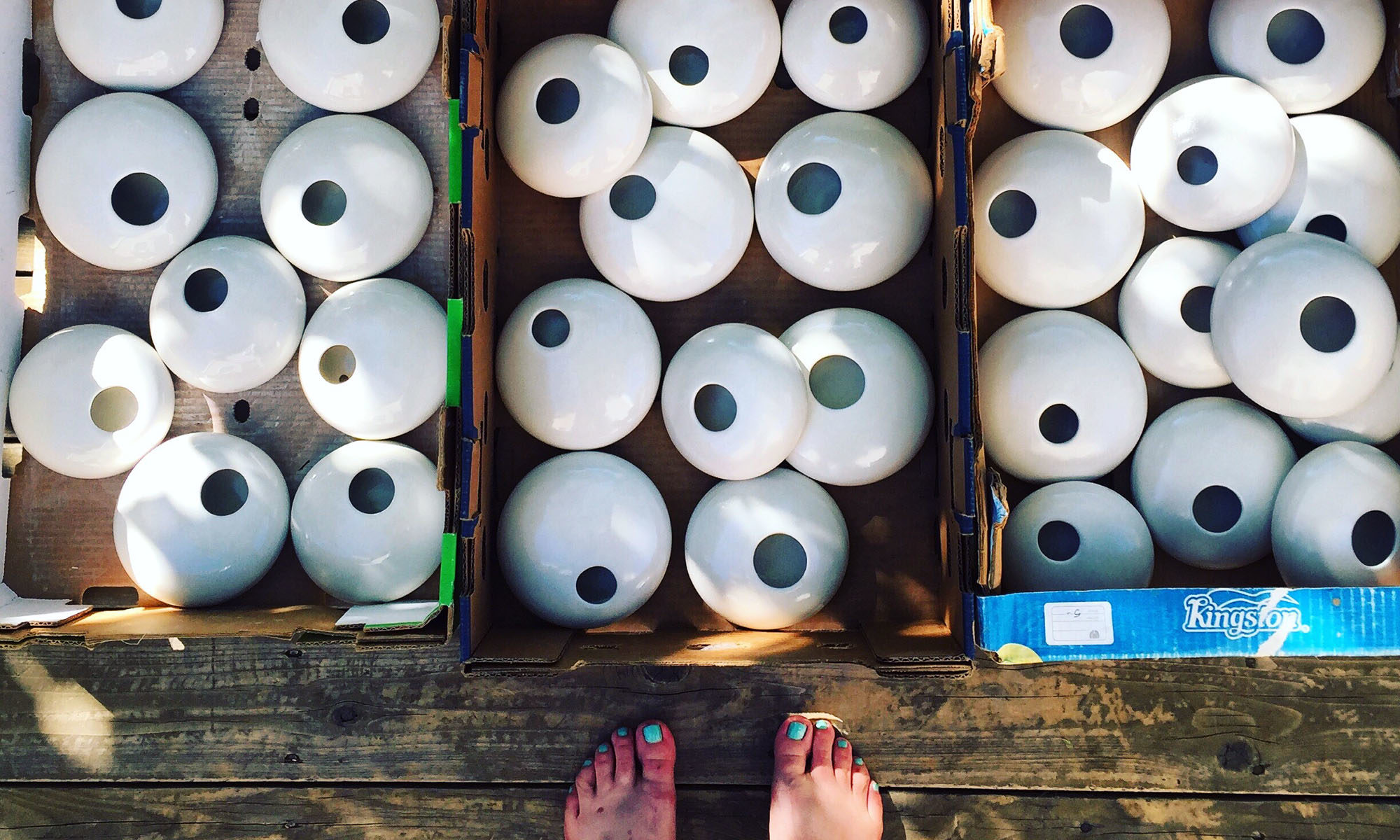Last week, I participated in a soda firing at the Colorado Potters Guild. The soda firing process is a gas reduction type of firing and is fairly labor intensive as compared to a regular reduction firing and definitely easier than an electric or oxidation type kiln firing.

Soda Firing Process
“In the soda firing process, soda ash (sodium carbonate) in water solution, is sprayed into kiln at maturing temperature, and sodium vapor combines with silica in clay to form sodium-silicate glaze.” – excerpted from Ceramic Arts Daily. It’s a magical process and I’m addicted to the outcome.
My firing partners and I spray the soda ash solution into the kiln ports when cone 9’s have fallen. Cone 9 is the equivalent of 2300 degrees F. We have 2 visible cone packs in the front bottom and top of the kiln. While we have a pyrometer to measure the temperature, we use the cone packs for visual confirmation of the kiln’s temperature. After the soda ash container is empty, we shut down the kiln and plug all the ports and burners. Once the kiln has cooled down so that pots can be handled with bare hands, we unload the kiln. We fired on Thursday and unloaded on Sunday, though, we probably could have unloaded on Saturday.

Wadding
After the soda ash is sprayed in the kiln at maturation, there is a fine layer of sodium silicate glaze over the interior of the kiln and on the kiln shelves. For this reason, we add little clay/alumina wads to the bottoms of our pots so that they do not stick to the kiln shelves. The wadding recipe contains 50% alumina which does not stick to the pots or the kiln shelves.
The wads to leave little circular marks on the pots which are the sign of a soda, salt or wood fired pot.

Post Firing Clean Up
After unloading the soda kiln, clean up begins. We use silicone carbide scrapers to scrape the glaze off all the shelves and posts. It’s a huge job, but one that goes fairly quick between 4-5 people. We had 5 people in this last firing and were able to unload and clean up in two hours time. Clean up is dirty work – with silica dust flying wildly. We use safe practices and all wear respirators and eye protection.

Below is a gallery of images if you would like to see more of our process.



























